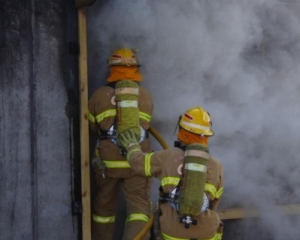Awake, Smoky and Hot!
Research news
Ninety-one firefighters from around Australia have undergone an intense three-day bushfire simulation in the lab – to help researchers understand the effects of firefighting on their health and performance.
With the bushfire season around the corner, researchers from the national Bushfire CRC are now sharing the results of their research so that best practice approaches can be adopted before summer.
The research participants came from five state and territory fire agencies across Australia (CFA, TFS, CFS, NSW RFS and Parks and Wildlife, and ACT Parks and Wildlife)
Project Leader, Dr Brad Aisbett, from Deakin’s Centre for Physical Activity and Nutrition Research, will lead a webinar, entitled “Awake, Smoky and Hot!,” about the recommended strategies on Monday, 22 September (12.30pm-1.30pm).
The webinar is aimed at operational managers, firefighters, workforce managers, workforce safety specialists and other interested parties.
Dr Aisbett said that heat stress and poor hydration have been identified as leading causes of injuries for firefighters in southern Australia. Further, firefighters can work long hours, often with only short breaks between consecutive shifts. In other work settings, long working hours, with shortened rest periods, can increase the risk of fatigue.
“Firefighting is an intense activity. If fire agencies can ensure, as much as possible, that firefighters have adequate sleep and access to fluids, they can help preserve their health and safety on the fireground,” Dr Aisbett said.
The three-day simulation gave Dr Aisbett and his colleagues the chance to investigate the impact of multiple stressors, such as sleep disruption and heat, on firefighters’ performance.
The firefighters spent the entire three days living in the simulated environment, sleeping and eating in the simulation setting and wearing full protective clothing for the “firefighting shifts.”
They rolled and manoeuvred hoses, raked, simulated driving and underwent physical tests to measure their brain waves, pulse, blood pressure, memory, attention and hand-eye co-ordination.
The simulations took place at the Box Hill Town Hall, and in field sites in Adelaide and Canberra.
Dr Aisbett said that understanding the role of sleep was one of the most important outcomes of the research.
“Shortened sleep impairs firefighters’ hand-to-eye co-ordination and the self-assessment of their work performance. It also elevates their cortisol levels, but it does not impact their physical work performance” he said.
“Whilst these findings should motivate fire agencies to continue promoting eight hours sleep (not just off-work time) between shifts, we understand this isn’t always possible. When firefighters’ sleep between shifts is short, fire agencies should consider additional safety measures on the fireground, particularly for workers performing tasks that require hand-eye co-ordination.”
The Bushfire CRC is currently in its final stages and is busy synthesising research conducted over the past 10 years. Forums that can be accessed on-line include: “Beyond the Incident,” (to be held on Sept 29); “Fire in the Landscape;” “Living on the Edge;” and “Paying the Price” etc.
Share this story
 Heat stress and poor hydration have been identified as leading causes of injuries for firefighters in southern Australia.
Heat stress and poor hydration have been identified as leading causes of injuries for firefighters in southern Australia.
